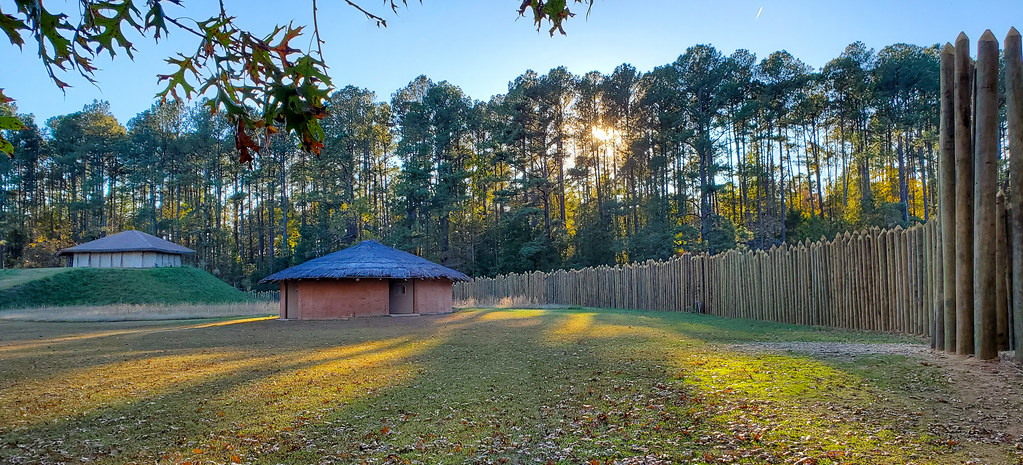#protohistory
Photo

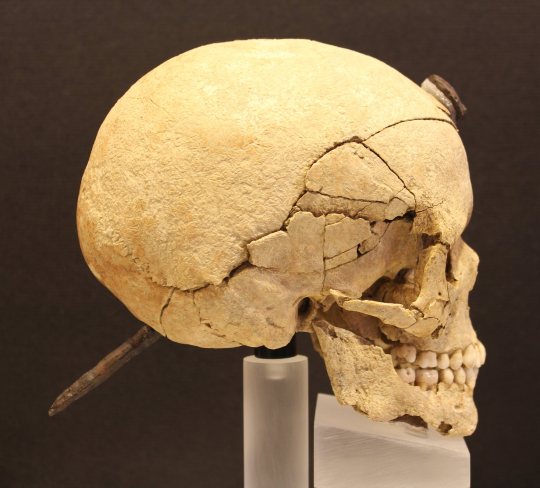
In various cities of the Ancient Iberians (Ancient Iberians were the indigenous cultures that lived in the Eastern coast of the Iberian peninsula before they got conquered by the Roman empire), archaeologists have often found skulls perforated by a nail. All of them have been found in the cities located in what nowadays is the Northern half of Catalonia (Ancient Iberian cultures, though related to each other, varied a lot area to area).
These are believed to be the skulls of their enemies, who were captured and beheaded. The enemy’s heads were nailed to the city walls or above the entrance door to houses, together with their weapons. Most of these heads belonged to individuals of the male sex, though some are female and a few belonged to children.
The Ancient Iberian language hasn’t been deciphered and their contemporaries didn’t write much about them, thus many aspects of their culture aren’t known for certain. Archaeologists have the hypothesis that this practice could be related to the way Celts exhibited the heads and hands of their enemies as war trophies, or related to a belief present in the ancient Mediterranean according to which cutting someone’s head off stopped them from reaching immortality. The Gauls even passed down the beheaded heads of their enemies to their children, as a prized possession that brought prestige. It’s a possibility that Northern Iberians were in touch with this practice.
Photos from the Ancient Iberian site Ullastret (Comarques Gironines, Catalonia) posted on National Geographic. Information from Rovirà i Hortalà, 1998 and MAC Ullastret.
#història#arqueologia#ullastret#catalunya#ancient iberians#antiquity#ancient history#ancient#archaeology#archeology#protohistory#war history#historical#historical artifacts#artifacts#anthropology#bones#european history#europe
115 notes
·
View notes
Text
instagram
#Archaoelogy#bronze age#ancient craft#reconstruction artifacts#experimental archaeology#Must Farm#Protohistory#Bronze Age Archaeology#British Archaeology#Instagram
1 note
·
View note
Video
To See What They Saw by Ruth and Joe Barrett
Via Flickr:
Archaeological excavations uncovered the evidence of two guard gates, one on the north and one on the south, along with the remains of a palisade wall surrounding the Town Creek site with structures like this red round family clan hut and the ceremonial townhouse elevated on the earthen mound ___________________________________________ Mount Gilead, NC – 2019NOV10 – The Town Creek Site: For our 23rd wedding anniversary, after church Joe & I paused for a picnic lunch on our way to Town Creek Site, set high on a low bluff of an oxbow on the west bank of the Little River near its confluence with Town Fork Creek in Mt. Gilead, NC, on the sunny southern side of the ancient Uwharrie Mountain Range located in the southeastern Piedmont region. The protohistoric Native American ceremonial center – listed in the National Register of Historic Places and designated a National Historic Landmark – is the first North Carolina State Historic Site, and it also remains the only state historic site in North Carolina dedicated to American Indian heritage, drawing astronomers, and visitors like us, from far and wide to this fascinating time capsule. The Native American People legacy carries muffled mystery buried in its background of protohistory, a period that spans prehistory and history, when a culture or civilization had no developed writing but when other cultures notated its existence. Excavating the earthen mound built of clay – one mound built atop former mounds – has been a focus of archaeological research under one director for more than half a century, an unusual phenomenon in the history of North American archaeology. People lived here for 12,000 years, but why particularly here? The Town Creek site manager Rich Thompson shared with Joe and me how major rains will turn the ceremonial center into an island surrounded by floodwater then as well as recently, flooding from the parking lot halfway up to the front door of the Visitor Center. Why the name Indian: fueled by bravery and ignorance financed by greed and arrogance, Columbus sailed the ocean blue in 1492, heading "to India" but reaching the New World, and the Town Creek people vanished with no clue; we have no written record of explanation. Today we see these lovingly-reconstructed structures and can look and learn in amazement and wonder. So we invite you to view the best of our photos we set into 6 mini-themed albums: • Mount Gilead, NC – 2019NOV10 – The Town Creek Site: ◦ Town Creek Site – 2019NOV10 – Stockade & North Entrance ◦ Town Creek Site – 2019NOV10 – Family Hut on its Burial Site ◦ Town Creek Site – 2019NOV10 – Mound & its Major Hut ◦ Town Creek Site – 2019NOV10 – Minor Ceremonial Hut ◦ Town Creek Site – 2019NOV10 – Ceremonial Center Plaza ◦ Town Creek Site – 2019NOV10 – Little River Bluff Overlook Hope you also enjoy the 17% of 394 photos we took this day!
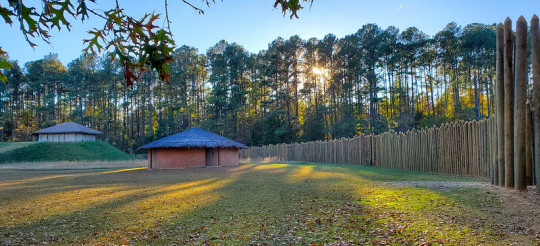
#State Historic Site#autumn#sunny#palisade#protohistory#North America#Mt. Gilead#lodges#paling#United States of America#southern side of the Uwharrie Mountains#southern North Carolina Piedmont#clan lodge#Native American settlement#outdoors#ceremonial center#stockade#South Appalachian Mississippian#USA#Southeast#Town House#Town Creek Mound Rd.#stakewall#first North Carolina State Historic Site#North Carolina#Archaeological Site#mortuary house#National Register of Historic Places#wooden stakes#foot of the Uwharrie Mountains
0 notes
Text
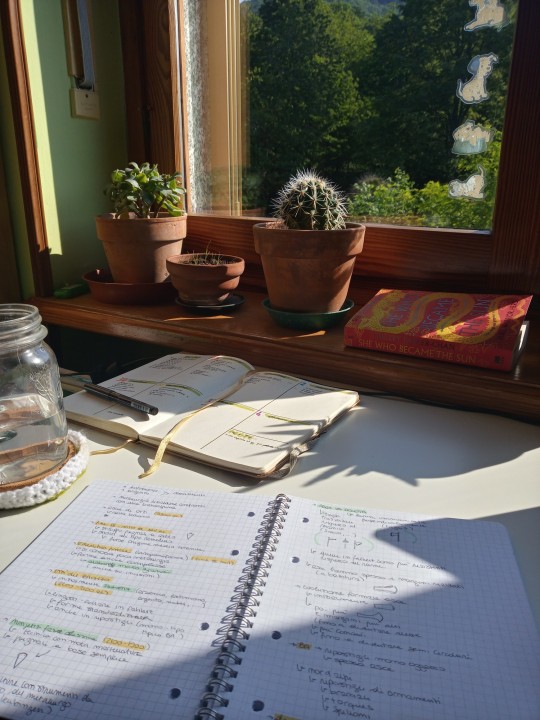
02|06|2023
26/50 days of productivity
Today was my first day reviewing for my second protohistory exam. I struggled to focus I will be honest. Even though I am pretty comfortable with most of the materials (there's a couple of more specific things I will definitely have to review a bit more) I just struggled to stay on the page. My mind keeps wandering. I am really tired and it's starting to show. I can't wait for this to be over, so that I'll be able to take a few days off. I still plan to study for a few weeks after my exam, even though I won't be taking the third one I had planned for July. I realized that the materials are just too many for me to finish working on it in time, so I'll take that in September. I still want to get all the work done in advance so that in September I'll only have to review it. But before all of this I will definitely reward myself with a couple of days off to recharge. I am so tired I can't even read my book during the day, because I simply don't have enough energy to focus on that. I wish I had new yarn to work on a new crochet project, because it would be the perfect hobby to fill my free time at the moment, but I haven't found the time to go buy it yet.
Productivity:
first complete protohistory review (which means I reread my notes, the ppts the professor used during his lectures and my notes and ppt for the presentation I did in class)
set up my bullet journal for next week (I am using super minimal weekly spreads atm and to be honest it's good enough)
set up my reading journal for June (did a very minimal cover page and monthly set up cause my energies are loooow)
practiced Irish on duolingo
continued listening to old episodes of the books unbound podcast
Self care:
read first thing in the morning
📖: She Who Became The Sun by Shelley Parker-Chan
#studyblr#studyinspo#uniblr#university#productivity#50 days of productivity#productivity challenge#book#journal#studying#notebook#notes#desk#study space#knife gang#journaling#mine#the---hermit
399 notes
·
View notes
Text


Sean bienvenidos, japonistasarqueológicos, a una nueva entrega de religión nipona, una vez dicho esto pónganse cómodos qué empezamos.
-
Seguramente, todos hemos escuchado hablar del Budismo y Sintoísmo, dos religiones muy diferentes entre sí, ya que sus pilares religiosos no están hechos de la misma materia, voy a intentar resumir este tema para que todos podamos entenderlo mejor. ¿Cuándo llego el budismo a Japón? Llego en el siglo VI d.c en el período kofun también denominado protohistoria, lo que no voy a negar y lo que todos sabemos es que china, India y otros países influenciaron a Japón y eso lo podemos ver todavía a día de hoy.
-
Pero hace poco vi el uso de la palabra Sincretismo religioso, lo cual, me parece el término de lo menos apropiado, ¿Qué significa sincretismo? Unión, fusión e hibridación, casos más claros, lo podemos ver en Latinoamérica y con Grecia y Roma. Por lo cual el término más apropiado para este caso sería coexistencia o convivencia, además en el periodo meiji hubo una reforma religiosa para separar ambas religiones y convivencia al sintoísmo, religión del estado, a esto se le llama Shinbutsu bunri en hiragana sería:(しんぶつぶんり) ¿Qué opinan ustedes?
-
Espero que os haya gustado y nos veamos en próximas publicaciones que pasen una buena semana.
-
Primera foto :santuario Heian Jingu(Kyoto)
Segunda foto: Templo Rengeoin( Kyoto)
-
Welcome, archaeological Japanists, to a new installment of Japanese religion, having said that, make yourself comfortable as we begin. - Surely, we have all heard of Buddhism and Shintoism, two very different religions from each other, since their religious pillars are not made of the same material, I am going to try to summarize this topic so that we can all understand it better. When did Buddhism arrive in Japan? It arrived in the 6th century AD in the Kofun period also called protohistory, which I will not deny and what we all know is that China, India and other countries influenced Japan and we can still see that today. - But I recently saw the use of the word religious syncretism, which seems to me to be the least appropriate term. What does syncretism mean? Union, fusion and hybridization, clearest cases, we can see it in Latin America and with Greece and Rome. Therefore, the most appropriate term for this case would be coexistence or coexistence. In addition, in the Meiji period there was a religious reform to separate both religions and coexistence with Shintoism, the state religion. This is called Shinbutsu bunri in hiragana: (しん ぶつぶんり) What do you think? - I hope you liked it and we'll see you in future posts and have a good week. - First photo: Heian Jingu Shrine (Kyoto) Second photo: Rengeoin Temple (Kyoto)
-
考古学者の日本主義者の皆さん、日本の宗教の新しい記事へようこそ。そうは言っても、安心して始めてください。 - 確かに、私たちは皆、仏教と神道という、互いにまったく異なる 2 つの宗教について聞いたことがあるでしょう。それらの宗教的支柱は同じ素材で作られていないため、私たち全員がよりよく理解できるように、このトピックを要約してみようと思います。 仏教はいつ日本に伝わったのでしょうか? それは、原史時代とも呼ばれる古墳時代の西暦 6 世紀に到来しました。私はそれを否定しません。また、中国、インド、その他の国々が日本に影響を与えたことは誰もが知っており、今日でもそれを見ることができます。 - しかし、私は最近、宗教的混合主義という言葉が使われているのを目にしましたが、これは私にとって最も不適切な用語であるように思えます。 結合、融合、ハイブリッド化の最も明確な事例は、ラテンアメリカやギリシャ、ローマで見られます。 したがって、この場合には「共存」または「共生」という言葉が最も適切でしょう。また、明治時代には両宗教を分離し、国教である神道と共存する宗教改革が行われました。これをひらがなで「神仏分理」といいます。ぶつぶんり)どう思いますか? - 気に入っていただければ幸いです。今後の投稿でお会いしましょう。良い一週間をお過ごしください。 - 1枚目の写真:平安神宮(京都) 写真2枚目:蓮華王院(京都)
24 notes
·
View notes
Text


AHMOSE NEFERTARI (Grandmother of Hatshepsut)
Ahmose Nefertari x Miss South Sudan
Ahmose-Nefertari was the first Great Royal Wife of the 18th Dynasty of Ancient Egypt…
She was a daughter of Seqenenre Tao and Ahhotep I, and royal sister and wife to Ahmose I…
Her son Amenhotep I became pharaoh and she may have served as his regent when he was young…
“The Tarifian, Badarian and Tasian cultures of Middle and Upper Egypt have strong ties with the Nubian/Nilotic pastoral tradition, as can be inferred, for instance, by the very similar pottery, economy and settlement pattern and by the latest findings in the deserts surrounding the Egyptian Nile valley” (Gatto 2011b, 2012a, b, 2013)
SOURCE;
(Prehistory and Protohistory of Ancient Civilizations; 2015)
In other words, Predynastic Ancient Egyptians (4500 B.C.— 3100 B.C.) are more closely related to Nubian / Nilotic peoples…
The Nilotic peoples are people indigenous to the Nile Valley who speak Nilotic languages…
They inhabit South Sudan, Sudan, Egypt, Ethiopia, Uganda, Kenya, the Democratic Republic of the Congo, Rwanda, Burundi and Tanzania…
Among these are the Burun-speaking peoples, Karo peoples, Luo peoples, Ateker peoples, Kalenjin peoples, Datooga, Dinka, Nuer, Atwot, Lotuko, and the Maa-speaking peoples…
Nubians / Nilotic peoples are the ORIGINAL inhabitants of ancient Kemet…
These are the ORIGINAL founders…
22 notes
·
View notes
Text
3/4 of this freaking faculty's speciality is prehistory and a tad of protohistory and damn...
I am SO HAPPY I didn't do my licence there because like... they didn't even saw stuff like egypt or mesopotamia or coptic/byzantine archaeology????? Y'all????? This is fucking sad???????????
They do have Africa though
BUT THE REST????
3 notes
·
View notes
Text

“(Fig. 91A.) Spouted Pot and Carinated Bowl, Nevasa.”
From: “PreHistory and protoHistory in India and Pakistan” by Sankalia, H.D.; 1962.
2 notes
·
View notes
Text
Do the same seminar that I did last year at the cost of 1) having to deal with the same teacher in charge plus 2) on a period I don't particularly like
OR
Do a seminar about archaeology and art history in Africa, but not knowing shit about Africa (and it most likely gonna be north africa)
OR
Do a seminar on ART, but on prehistory and protohistory and I don't like prehistory
So yeah I'm stuck once more
2 notes
·
View notes
Photo
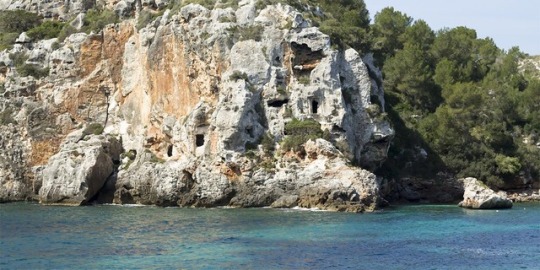
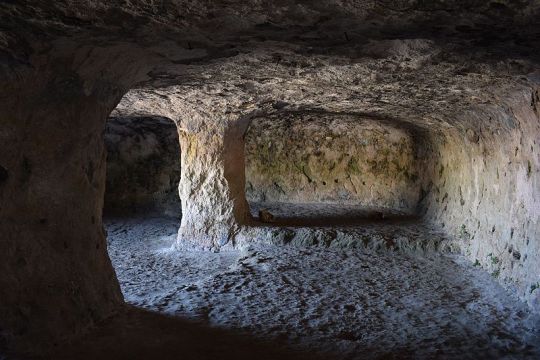
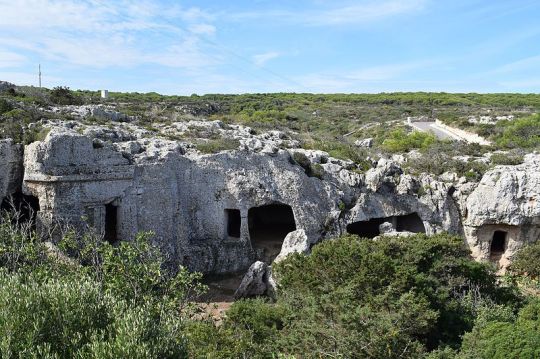

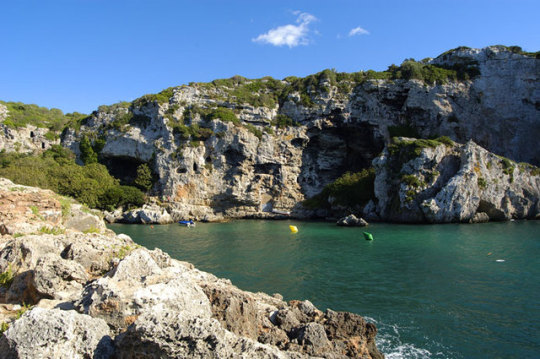
Calescoves Necropolis in Alaior, Menorca (Balearic Islands).
This is the largest necropolis of the ancient Talaiotic culture in Menorca. It consists of more than 90 caves excavated in the rock. The oldest ones are natural caves where humans simply added the door, thought to have been in use between the years 1100 BC and 700 BC. Most caves are artificial, excavated by humans in the Bronze Age (800 BC to 600 BC) and Iron Age (750 BC to 123 BC). These caves were used to bury people with prized objects. After the Roman occupation (123 BC), the place was still used as a site for religious pilgrimage, as can be attested by the engravings in one of the caves.
The objects found in these tombs, as well as the remains of the sunken ships found in the cove in front, can be seen in Menorca’s Museum.
Photos from Menorca Turisme and Bonnin Sanso.
#arqueologia#història#alaior#menorca#illes balears#archaeology#archeology#protohistory#bronze age#iron age#antiquity#mediterranean#sea#travel#europe#wanderlust#southern europe#history#historical#balearic islands
30 notes
·
View notes
Text
This Black History Month I'm going for what for me is very straightforward and simple: military history
Beginning this month's Black History Month with its theme of military history first and foremost, where else, with the beginning. And it is, in a somewhat grimmer note equally appropriate that the first large-scale wars attested in the archaeological and historical records (and this is where a lot of more technical stuff is going to come into play here) are found in Africa along with so many other firsts.
Still more pointedly it was not found in *Egypt* or in the parts of Africa which speak Afro-Asiatic languages and include the indigenous pale-skinned peoples of Africa. It was found, in one of the more unfortunate elements showing specific parts of the world have a very long history of conflict in what is today the country of North Sudan.
This was 13,400 years ago, so these are not automatically the direct ancestors of the Nilotic peoples who lived in the region today. It should not require this emphasis but humanity and the contemptuous scientific racism applied to African history nonetheless necessitate stating it. African history and cultures are no more static than elsewhere, people moved, societies changed.
They found proof of this war, and the other one to be noted after it by the crudest possible method: mass graves of young men of military age with markers of violent death showing intentional violence on a scale that can't be accounted for by 'mere' murder. One of the main points in emphasizing this is that from a point just 1,000 years before the first true cities were founded in what's now Palestine/Eretz Yisrael that African societies were already sophisticated enough to do what only shows up later, by some thousands of years, in other parts of the world.
A society that can afford to fight on this scale by definition is sophisticated enough to have the luxury to spend its time doing something like this as a thing in itself. Wars are not and never have been cheap, they are one of the cruder but ultimately real measures of how complex societies are as the more complex the society, the better they are at actually fighting them.
Thus the grim irony that this proves, if anything, that African history and protohistory have far more secrets to uncover that would dismantle colonial-era conceits and hubris on what is simple and what is complex.
#lightdancer comments on history#black history month#against eurocentrism#military history#history of sudan
0 notes
Text
“The task of aesthetics is not to comprehend artworks as heremeneutical objects; in the contemporary situation, it is their incomprehensibility that needs to be comprehended.
What is so resistlessly absorbed as a cliche by the watchword — the absurd — could only be recuperated by a theory that thinks its truth. It cannot simply be divided off from the spiritualization of artworks as counterpoint to that spritiualization; this counterpoint is, in Hegel’s words, the ether of artworks; it is spirit itself in its omnipresence and not the intention of the enigma. For in that it negates the spirit that dominates nature, the spirit of artworks does not appear as spirit. It ignites on what is opposed to it, on materiality.
In no way is spirit present in the most spiritual artworks. Art is redemptive in the act by which the spirit in it throws itself away. Art holds true to the shudder but not by regression to it. Rather, art is its legacy. The spirit of the artwork produces the shudder by externalizing it in objects.
Thus art participates in the actual movement of history in accord with the law of enlightenment: By virtue of the self-reflection of genius, what once was deemed reality emigrates into imagination, where it survives by becoming conscious of its own unreality.
The historical trajectory of art as spiritualization is that of the critique of myth as well as that toward its redemption: The imagination confirms the possibilities of what it recollects.
This double movement of spirit in art describes its protohistory, which is inscribed in its concept, rather than its empirical history. The uncheckable movement of spirit toward what has eluded it becomes in art the voice that speaks for what was lost in the most distantly archaic.”
0 notes
Text
Dholavira Exploration: Enriching Experiences at Evoke Dholavira
Evoke Dholavira presents a unique opportunity for you to delve into the intricacies of Dholavira by providing various enriching experiences.
1 note
·
View note
Text
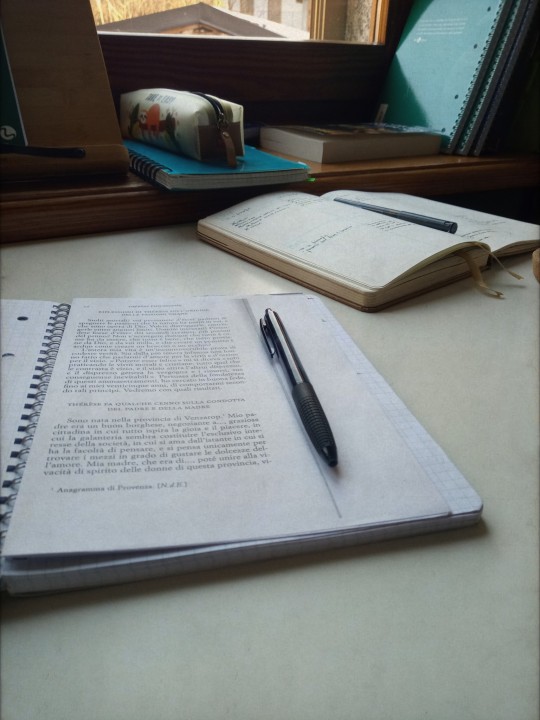
13|12|2023
Today was a day of simple joys. In the morning when I was in class I realized how good it feels to sit in that room. It's the polar opposite of what I was feeling last semester in my protohistory class. In February I felt out of place, I was uncomfortable and I felt frozen in place unable to talk to people. In this class everyone is just so casually nice. People smile at you and say hi simply because they have seen you there before, even if you haven't really talked. It's such a calm and relaxing vibe to be in for someone like me. And again I don't really know anyone here so it's the people there making a difference. After class I met up with two uni friends and we had sushi for lunch and walked around the city and after we said goodbye we continued texting each other for hours. I realized how comfortable I feel with them, and it's absurd. I was already friends with one of them but this new friend joining us somehow makes me feel like our friendship got deeper. I am truly comfortable and relaxed when I am with them. I don't feel the pressures I normally feel when I am out meeting and talking people, I am just old silly me and it feels great. I feel like I am healing from a lot of things thanks to them, and one year ago I could have never imagined to form such a strong bond with someone I met just a couple of months ago. I feel really grateful about this, which is also why I wanted to record this joy in this digital journal of mine.
#no productivity lists and stuff bc i am writing it the day after#but last night i was sleepy and ignored my phone#and i wanted to record this for future me when i'll be rereading my entries in the future because at the and of the day this is my journal#studyblr#studyinspo#uniblr#university#journal#jouranling#calm hobbit winter#mine#the---hermit
83 notes
·
View notes
Text
Tasmanian Museum and Art Gallery
About Tasmanian Museum and Art Gallery
Nestled on the banks of Hobart’s waterfront lies a treasure trove of scientific and artistic treasures – the Tasmanian Museum and Art Gallery. Steeped in history and cultural significance, this museum is the second oldest of its kind in Australia. The museum’s origins can be traced back to the Royal Society of Tasmania, established in 1843. Since then, the TMAG has become a leading cultural institution, preserving and showcasing Tasmanian culture’s rich heritage and diversity. Whether you’re a history buff, an art enthusiast, or simply curious about the world around you, a visit to the TMAG is an absolute must.
The Museum’s collection is a comprehensive and in-depth portrayal of Tasmania’s rich history, from its prehistoric geological evolution to modern times. It offers visitors an impressive array of exhibits that brings to life the different eras the island has experienced. The collection takes visitors on a journey of Tasmania’s past, exploring the protohistory display from the inter-glacial periods, the local fauna, British settlement, the colonial period, Tasmania’s past as a penal colony, and more. The art gallery also has a fine collection of Colonial and Contemporary Art that exhibits the island’s cultural richness throughout history. The Museum’s attention to detail in presenting Tasmania’s past makes it a must-visit attraction for anyone looking to learn about Tasmania’s amazing history.
What to do at Tasmanian Museum and Art Gallery
Located in Tasmania, TMAG offers an unforgettable experience to visitors of all interests and ages. Whether you are a family looking for an educational experience, a tourist curious about Tasmania’s history or an art lover, TMAG is the perfect destination. With over 2,000 square metres of public and exhibition spaces to explore, there is so much to discover here. Don’t miss out on the opportunity to join the free guided tours or browse the galleries to experience TMAG’s rich blend of permanent collections, touring and temporary exhibitions, and special displays. This museum is a true gem that offers something unique to every visitor.
When you step into the museum, the history and stories of Tasmania come alive. But did you know that it was officially created in 1848? That’s right; the museum has been around for over 170 years! The collections it holds, however, date much earlier. The Royal Society of Tasmania, the Mechanics’ Institution of Hobart, the Van Diemen’s Land Agricultural Society, and the Van Diemen’s Land Scientific Society all tried establishing museums before 1848. The Mechanics Institution had the most success, but we don’t know much about what happened to the other attempts. Nevertheless, the museum we have now is a testament to the resilience and dedication of those who came before us. Explore the halls and see for yourself the wonders of Tasmania’s past and present.
One local company in Hobart that is involved in this tourist attraction site is:
Website: Hobart Bathroom Renovations Experts
Address: 199 New Town Rd, New Town TAS 7008
Phone: (03) 6152 6136
from Hobart Bathroom Renovations https://ift.tt/WeyT1O9
via IFTTT
source https://hobartbathroomrenos.wordpress.com/2023/07/14/tasmanian-museum-and-art-gallery/
0 notes
Text
Hotel Gelato: still great after all these years
Ricardo talks to Hotel Gelato's Dan Hoffman, an industry pioneer.
Back in gelato protohistory, more than 13 years ago, Toronto, despite its large Italian population, was something of a gelato desert, except in places like St. Clair West’s Corso Italia and the College Street Little Italy. Then along came Hotel Gelato in the more mainstream Eglinton West area, proving that the delicious Italian creation’s appeal could broaden to a much broader audience. An…

View On WordPress
0 notes
